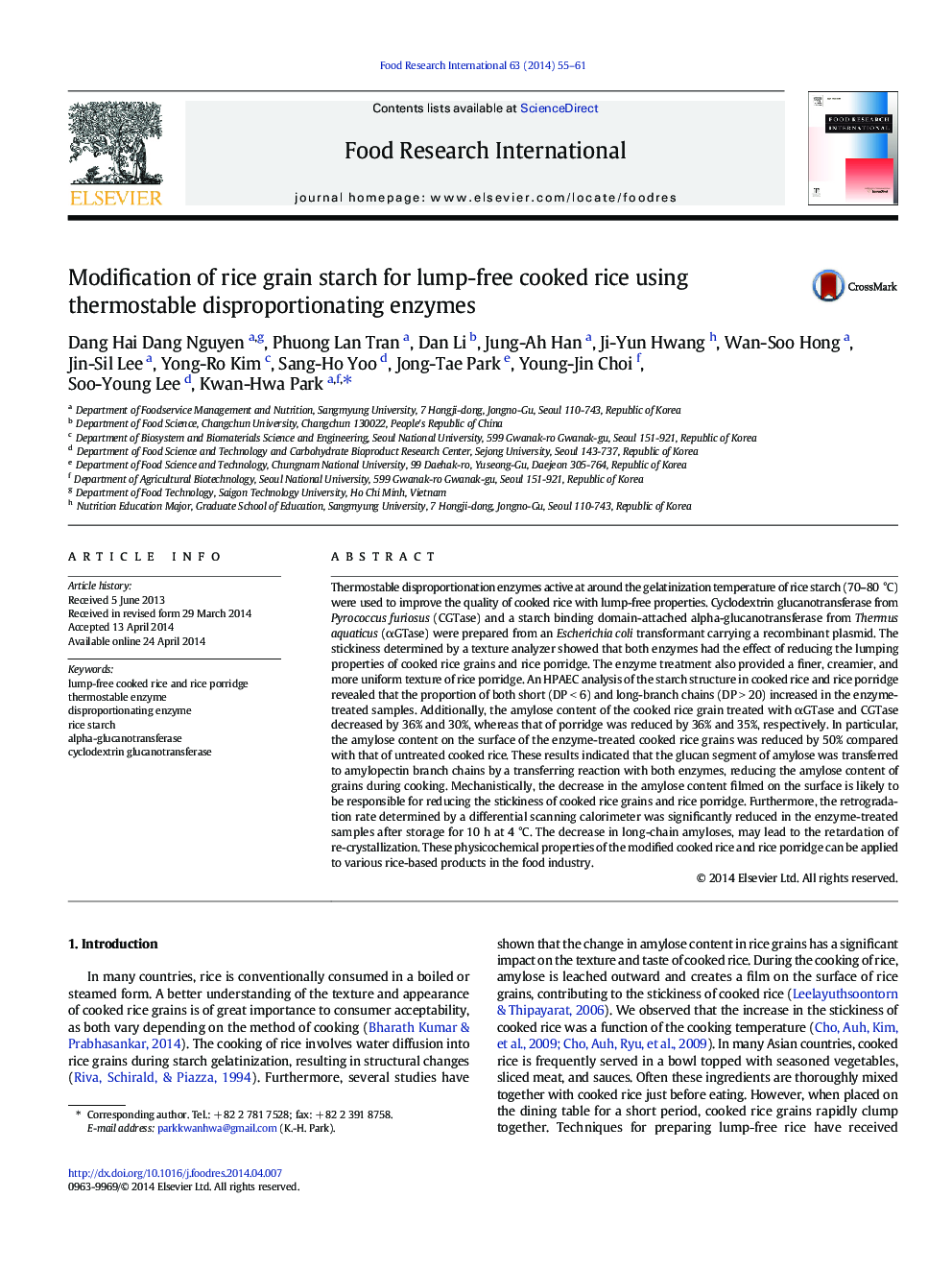| کد مقاله | کد نشریه | سال انتشار | مقاله انگلیسی | نسخه تمام متن |
|---|---|---|---|---|
| 6395712 | 1330657 | 2014 | 7 صفحه PDF | دانلود رایگان |
- We prepared lump-free cooked rice and porridge using disproportionation enzymes.
- The amylose content on the surface of the enzyme-treated rice grains was reduced.
- Amylose filmed on the surface of cooked rice grain is responsible for stickness.
- Disproportionation enzymes transfer a segment of amylose to amylopectin branch chain.
Thermostable disproportionation enzymes active at around the gelatinization temperature of rice starch (70-80 °C) were used to improve the quality of cooked rice with lump-free properties. Cyclodextrin glucanotransferase from Pyrococcus furiosus (CGTase) and a starch binding domain-attached alpha-glucanotransferase from Thermus aquaticus (αGTase) were prepared from an Escherichia coli transformant carrying a recombinant plasmid. The stickiness determined by a texture analyzer showed that both enzymes had the effect of reducing the lumping properties of cooked rice grains and rice porridge. The enzyme treatment also provided a finer, creamier, and more uniform texture of rice porridge. An HPAEC analysis of the starch structure in cooked rice and rice porridge revealed that the proportion of both short (DP < 6) and long-branch chains (DP > 20) increased in the enzyme-treated samples. Additionally, the amylose content of the cooked rice grain treated with αGTase and CGTase decreased by 36% and 30%, whereas that of porridge was reduced by 36% and 35%, respectively. In particular, the amylose content on the surface of the enzyme-treated cooked rice grains was reduced by 50% compared with that of untreated cooked rice. These results indicated that the glucan segment of amylose was transferred to amylopectin branch chains by a transferring reaction with both enzymes, reducing the amylose content of grains during cooking. Mechanistically, the decrease in the amylose content filmed on the surface is likely to be responsible for reducing the stickiness of cooked rice grains and rice porridge. Furthermore, the retrogradation rate determined by a differential scanning calorimeter was significantly reduced in the enzyme-treated samples after storage for 10 h at 4 °C. The decrease in long-chain amyloses, may lead to the retardation of re-crystallization. These physicochemical properties of the modified cooked rice and rice porridge can be applied to various rice-based products in the food industry.
Journal: Food Research International - Volume 63, Part A, September 2014, Pages 55-61
